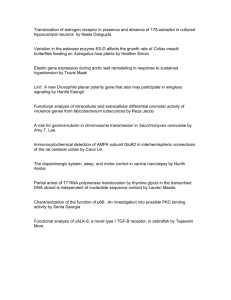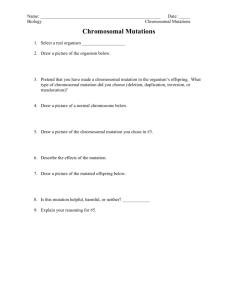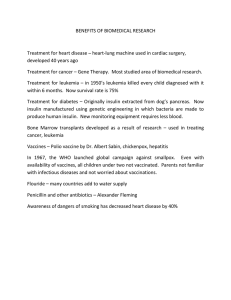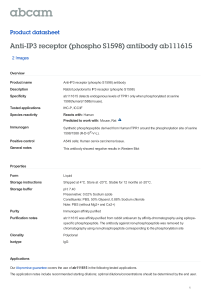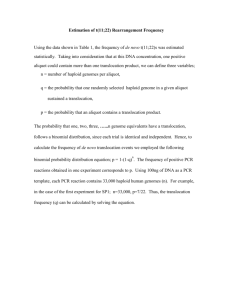Anti-PDGF Receptor beta (phospho Y716) antibody ab16862
advertisement
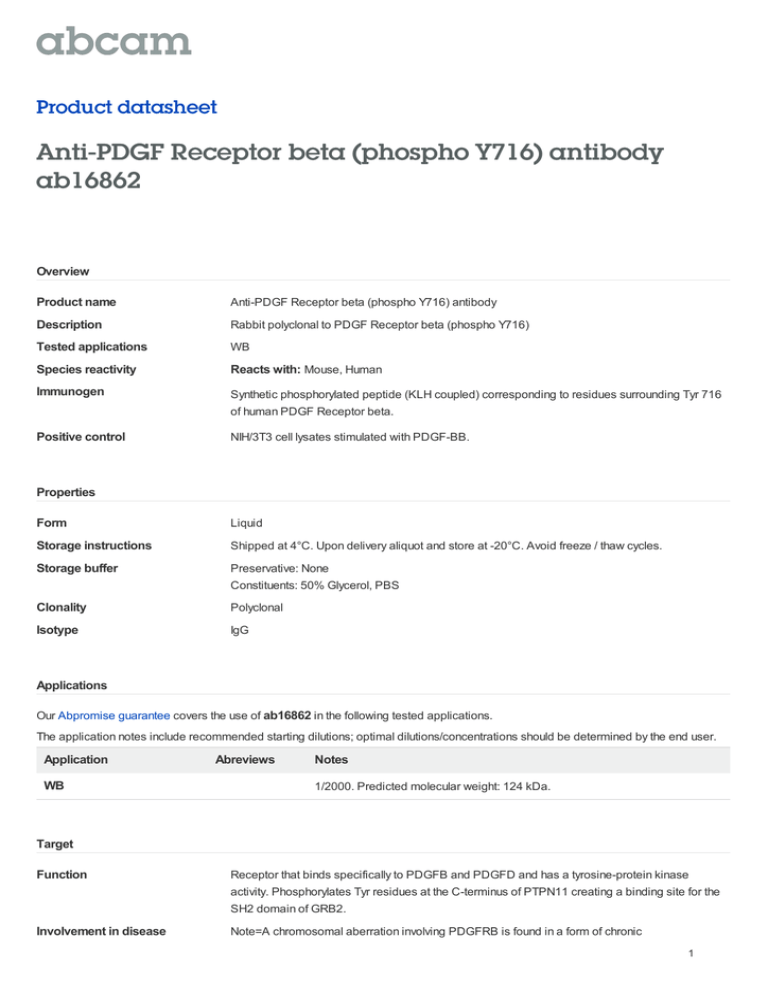
Product datasheet Anti-PDGF Receptor beta (phospho Y716) antibody ab16862 Overview Product name Anti-PDGF Receptor beta (phospho Y716) antibody Description Rabbit polyclonal to PDGF Receptor beta (phospho Y716) Tested applications WB Species reactivity Reacts with: Mouse, Human Immunogen Synthetic phosphorylated peptide (KLH coupled) corresponding to residues surrounding Tyr 716 of human PDGF Receptor beta. Positive control NIH/3T3 cell lysates stimulated with PDGF-BB. Properties Form Liquid Storage instructions Shipped at 4°C. Upon delivery aliquot and store at -20°C. Avoid freeze / thaw cycles. Storage buffer Preservative: None Constituents: 50% Glycerol, PBS Clonality Polyclonal Isotype IgG Applications Our Abpromise guarantee covers the use of ab16862 in the following tested applications. The application notes include recommended starting dilutions; optimal dilutions/concentrations should be determined by the end user. Application WB Abreviews Notes 1/2000. Predicted molecular weight: 124 kDa. Target Function Receptor that binds specifically to PDGFB and PDGFD and has a tyrosine-protein kinase activity. Phosphorylates Tyr residues at the C-terminus of PTPN11 creating a binding site for the SH2 domain of GRB2. Involvement in disease Note=A chromosomal aberration involving PDGFRB is found in a form of chronic 1 myelomonocytic leukemia (CMML). Translocation t(5;12)(q33;p13) with EVT6/TEL. It is characterized by abnormal clonal myeloid proliferation and by progression to acute myelogenous leukemia (AML). Note=A chromosomal aberration involving PDGFRB may be a cause of acute myelogenous leukemia. Translocation t(5;14)(q33;q32) with TRIP11. The fusion protein may be involved in clonal evolution of leukemia and eosinophilia. Note=A chromosomal aberration involving PDGFRB may be a cause of juvenile myelomonocytic leukemia. Translocation t(5;17)(q33;p11.2) with SPECC1. Defects in PDGFRB are a cause of myeloproliferative disorder chronic with eosinophilia (MPE) [MIM:131440]. A hematologic disorder characterized by malignant eosinophils proliferation. Note=A chromosomal aberration involving PDGFRB is found in many instances of myeloproliferative disorder chronic with eosinophilia. Translocation t(5;12) with ETV6 on chromosome 12 creating an PDGFRB-ETV6 fusion protein. Note=A chromosomal aberration involving PDGFRB may be the cause of a myeloproliferative disorder (MBD) associated with eosinophilia. Translocation t(1;5)(q23;q33) that forms a PDE4DIP-PDGFRB fusion protein. Sequence similarities Belongs to the protein kinase superfamily. Tyr protein kinase family. CSF-1/PDGF receptor subfamily. Contains 5 Ig-like C2-type (immunoglobulin-like) domains. Contains 1 protein kinase domain. Post-translational modifications Autophosphorylated. Dephosphorylated by PTPRJ at Tyr-751, Tyr-857, Tyr-1009 and Tyr-1021. Cellular localization Membrane. Please note: All products are "FOR RESEARCH USE ONLY AND ARE NOT INTENDED FOR DIAGNOSTIC OR THERAPEUTIC USE" Our Abpromise to you: Quality guaranteed and expert technical support Replacement or refund for products not performing as stated on the datasheet Valid for 12 months from date of delivery Response to your inquiry within 24 hours We provide support in Chinese, English, French, German, Japanese and Spanish Extensive multi-media technical resources to help you We investigate all quality concerns to ensure our products perform to the highest standards If the product does not perform as described on this datasheet, we will offer a refund or replacement. For full details of the Abpromise, please visit http://www.abcam.com/abpromise or contact our technical team. Terms and conditions Guarantee only valid for products bought direct from Abcam or one of our authorized distributors 2
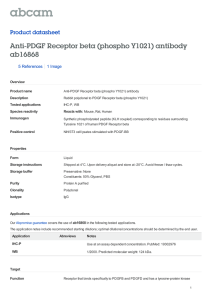
![Anti-PDGF Receptor beta antibody [APB5] (Biotin) ab93533](http://s2.studylib.net/store/data/013861767_1-d9511436ce8f3d7c52364c2e1166de1d-300x300.png)
